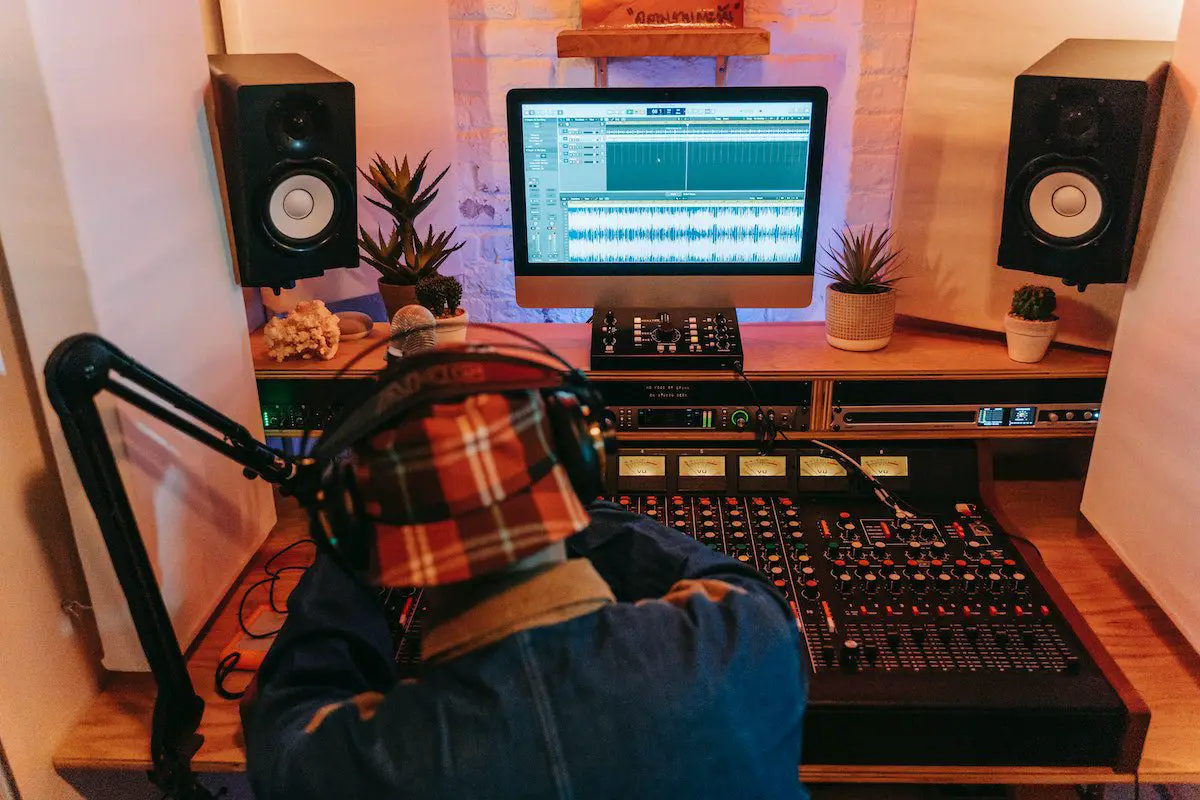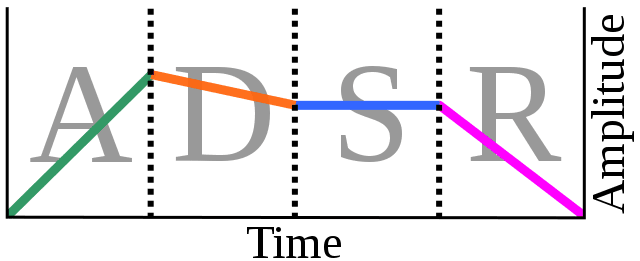Do you ever listen to your favorite tracks and wonder how they were made? The answer might just lie in the envelope. Now, before you go stuffing your music collection into a bunch of envelopes, let me explain.
In this post, you’ll learn all about envelope shaping in audio production and how it can take your music to the next level. We’ll cover everything from the attack and decay stages to sustain and release. So grab your headphones and a cup of coffee, and let’s dive into the wonderful world of envelope shaping!
What is envelope in audio production? Envelope shaping is the process of manipulating the four stages of a sound’s amplitude envelope: attack, decay, sustain, and release. By adjusting these stages, producers can create unique sounds and shape the dynamics of a track. Envelope shaping is crucial in audio production, allowing producers to create professional-quality music.
What is envelope in music?
An envelope in music describes how a sound changes over time, relating to elements such as amplitude (volume), frequencies (with filters), or pitch. It refers to the way the amplitude (sound) gets louder and softer over time, which is due to the four stages of modulation in the envelope: Attack, Decay, Sustain, and Release (ADSR). These stages affect everything from the rhythm to the genre of a song.

Envelopes, also known as contour generators, shape music waves into a more realistic form by contouring different parameters like attack, decay, sustain, and release. The most common envelope is the ADSR, which typically works with a voltage-controlled analog synthesizer.
AKAI Professional MPK Mini MK3

AKAI Professional MPK Mini MK3
Why is the envelope important in music?
What are the four stages of modulation in the envelope?
The four stages of modulation in an envelope in music are Attack, Decay, Sustain, and Release (ADSR). These stages determine how a sound changes over time, affecting its character and dynamics.

1. Attack
The envelope influences the initial impact or onset of a sound, affecting the sharpness or softness of a note. This helps distinguish between different instruments or articulations (e.g., a plucked guitar string versus a bowed violin).
2. Decay
The decay phase controls how quickly the sound reduces in amplitude after the attack. This contributes to the perceived length and resonance of a sound, playing a crucial role in defining the tonal characteristics of instruments.
3. Sustain
The sustain phase determines the level at which the sound is maintained while a note is held or a key is pressed. This phase greatly affects the overall energy and intensity of a musical passage.
4. Release
The release phase governs how quickly the sound fades to silence once the note is released. This aspect impacts the sense of space and the smoothness of transitions between notes, which can evoke different emotions and moods in a composition.
Tips on using envelope shaping in audio
Envelope shaping is a powerful technique in audio production that allows you to shape and sculpt sounds by manipulating the ADSR (Attack, Decay, Sustain, Release) envelopes. This process is often used to change the character of sounds, such as making them softer, sharper, longer, or shorter.
By understanding and effectively using envelope shaping, you can add dynamics and expression to your audio tracks. Here are some tips to help you make the most out of envelope shaping:
1. Understand the ADSR envelope
The ADSR envelope consists of four stages: Attack, Decay, Sustain, and Release. Each stage controls different aspects of the sound’s volume over time. It’s essential to understand how each stage works and how they interact with each other.
2. Experiment with attack time
The Attack stage controls how quickly the sound reaches its maximum volume after the initial onset. Adjusting the attack time can significantly impact the perceived sharpness or softness of the sound. A shorter attack time can make the sound more aggressive and punchy, while a longer attack time can create a smoother, more gradual onset.
3. Adjust the decay and release
The Decay stage controls the time it takes for the sound to reach the sustain level after the attack. The Release stage determines how the sound fades out after the note is released. Modifying the decay and release times can shape the duration and smoothness of the sound. Longer decay and release times can create sustained and lingering sounds, while shorter times can result in quick fades or staccato effects.
Each sound and musical context may require unique envelope shaping techniques, so take the time to explore and find what works best for your specific project.
4. Use sustain level for continuous sound
The Sustain stage sets the volume level that the sound maintains while a key is held down. Adjusting the sustain level allows you to control the intensity and consistency of a sound over time. It is especially useful for creating continuous sounds like pads or drones.
5. Utilize envelope shaping tools
Digital audio workstations (DAWs) often provide built-in tools for envelope shaping. These tools allow you to visualize and manipulate the envelope response in real time. Plugins like Enveloper provide precise control over the envelope shaping process, allowing you to view the volume envelope on an oscilloscope and make adjustments accordingly.
6. Experiment and trust your ears
Envelope shaping is a creative process, and there are no fixed rules. Experiment with different envelope settings to achieve the desired sound. Trust your ears and make adjustments based on what sounds pleasing to you. Each sound and musical context may require unique envelope shaping techniques, so take the time to explore and find what works best for your specific project.
Conclusion
Well, folks, we’ve reached the end of our journey into the world of envelope shaping in audio production. I hope you’ve learned a thing or two about how to take your music to the next level.
So, what do you think? Are you ready to start manipulating those envelopes and creating some killer sounds? Did I cover everything you wanted to know? Let me know in the comments section below (I read and reply to every comment). And hey, if you found this article helpful, share it with a friend who’s also into music production. Spread the love!
Key takeaways
This article covered envelope in audio. Here are some key takeaways:
- Envelope in audio refers to the changes in a sound’s amplitude over time and is composed of four stages: attack, decay, sustain, and release.
- Understanding and manipulating the envelope is crucial to audio production and key to creating unique and professional-sounding music.
- Envelope shaping techniques can create everything from a sharp percussive hit to a long, sustained pad sound.
- Experiment with different envelope shaping settings for you to achieve your desired sound.















